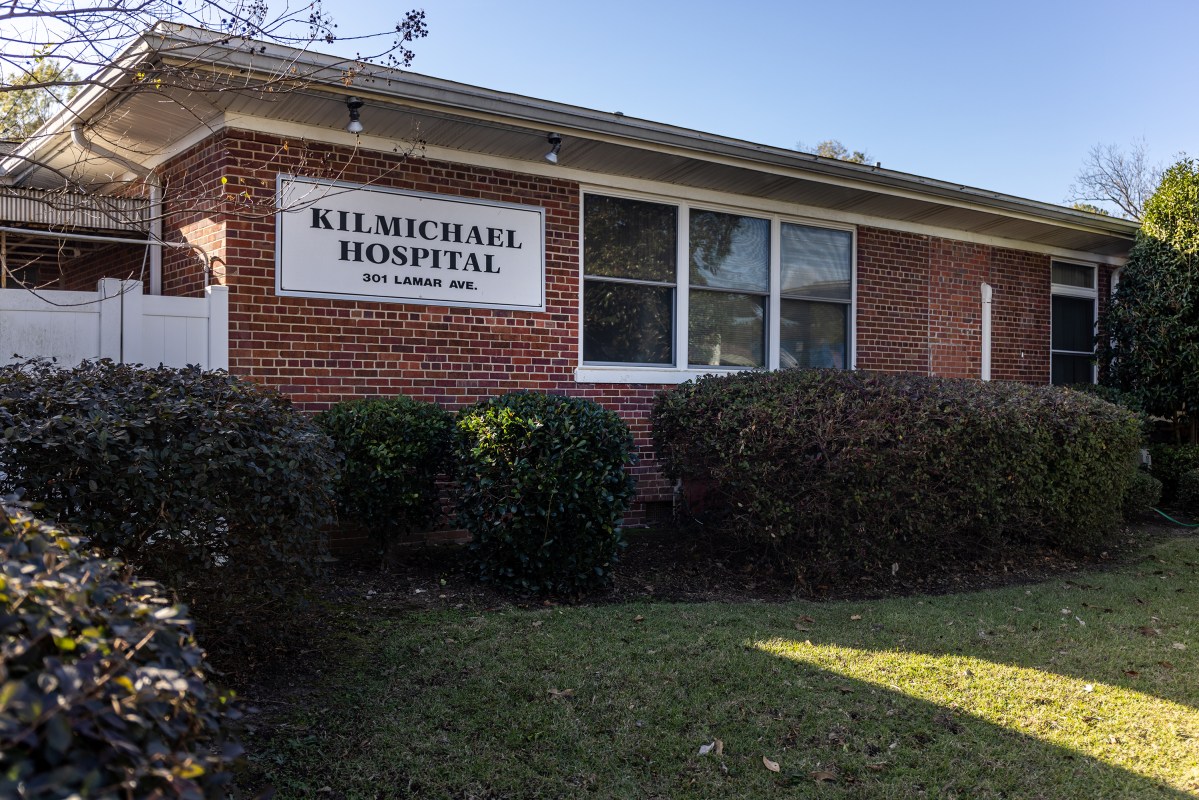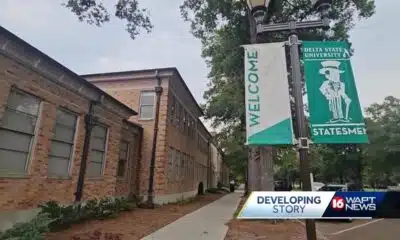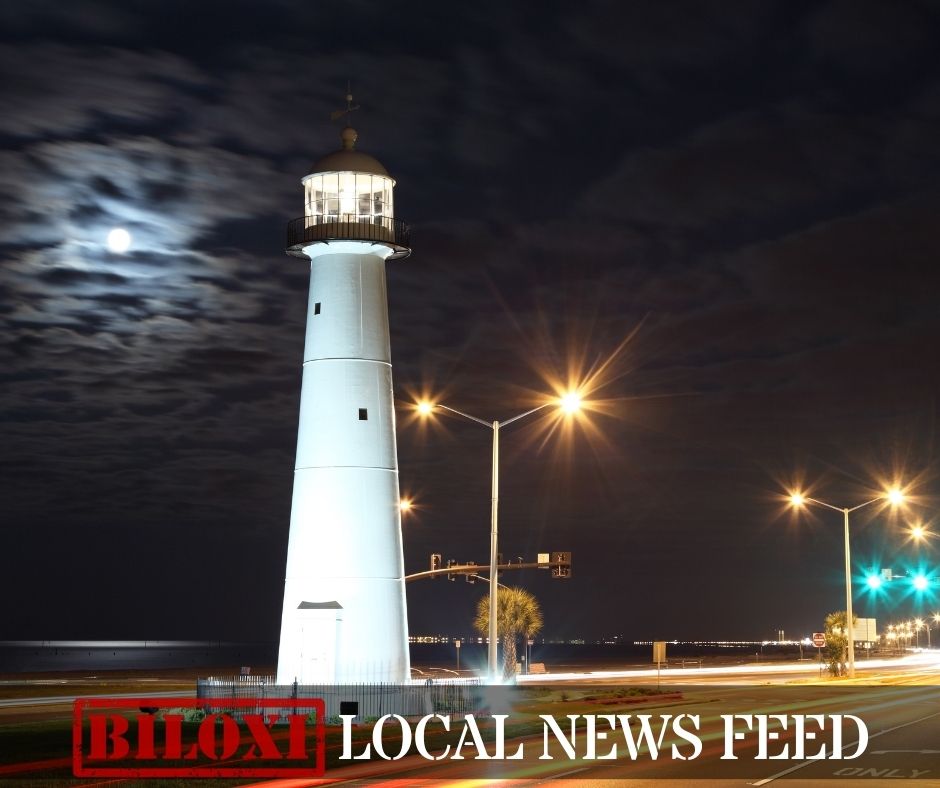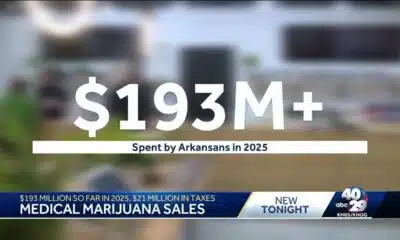Mississippi Today
‘What’s your plan, watch Rome burn?’: Politicians continue to reject solution to growing hospital crisis
‘What’s your plan, watch Rome burn?’: Politicians continue to reject solution to growing hospital crisis
Note: This article is part of Mississippi Today’s ongoing Mississippi Health Care Crisis project.Read more about the project by clicking here.
Mississippi's only burn center has closed. The Delta's only neonatal intensive care unit has closed. A Jackson hospital that serves vulnerable populations is gutting key services to balance its budget. One of the state's largest hospitals is months, if not weeks, from shutting its doors for good.
Mississippi hospitals are in crisis, struggling to keep up with rising industry costs and cover care for the sixth-most uninsured population in America. Six hospitals have closed across the state since 2005, and countless more have reduced services and staff.
Even more sobering, the state's top health care leaders warn that a dozen more hospitals across the state are in imminent danger of closing.
“Things are getting worse, not better,” Dr. Dan Edney, the state’s health officer, said in an October Board of Health meeting. “We know of 10-12 hospitals statewide that may not even be here one year from now … Those of us who are watching this in health care leadership statewide have a lot of concern.”
As the Mississippi health care crisis worsens, the state's political leaders are facing growing pressure from health care professionals to do something they've refused for 12 years: expand Medicaid. Doing so, as 38 states have done, would provide immediate financial relief to the state's hospitals that are struggling to stay alive, countless economic and health care experts have said.
About 12% of Mississippians are uninsured, leaving hospitals with little to no way to recoup the costs of care administered to some of the nation’s poorest and unhealthiest patients. Hospitals are required to provide life-saving care to everyone, regardless of whether they’re insured. In many cases, those costs are bringing hospitals — including Greenwood Leflore Hospital in the Mississippi Delta — to the brink of closing.
Studies, including one from the state economist, have shown Medicaid expansion would provide health care coverage for at least 200,000 primarily working Mississippians who don’t currently have it. More than $1 billion per year would flow to the state after expansion, and hospitals would directly receive hundreds of millions to cover rising costs. The study also showed Medicaid expansion would create more than 11,000 jobs per year from 2022 to 2027.
READ MORE: Mississippi leaving more than $1 billion per year on table by rejecting Medicaid expansion
"When you have major hospital systems in this state that have lost a quarter billion dollars last year, hospitals that have never had losses having them now and others budgeting for major losses for next year — the number of hospitals close to the brink is the most it's ever been,” said Tim Moore, president of the Mississippi Hospital Association, an organization that has for years lobbied for Medicaid expansion.
But Gov. Tate Reeves, Speaker of the House Philip Gunn and several powerful political brokers in Jackson have stood firm against even the suggestion of expansion, ignoring the dozens of economic experts who say the state can afford it and that hospitals would be much better off.
“No, I don't support expanding Medicaid in Mississippi,” Reeves told a Mississippi Today reporter last week during a hospital event in Ocean Springs. “I made, very clear, my position when I was running for governor in 2019. What we've got to do in Mississippi is we've got to continue to focus on economic development, job creation, bringing better and higher paying jobs to our state.”
The health care landscape in Mississippi — and nationwide — has changed dramatically since Reeves first made that campaign promise. The stresses of the pandemic widened the cracks in already struggling hospital systems. Labor and supplies costs have surged, making even traditionally profitable hospitals reassess their budgets and services.
Reeves recently pushed legislation giving $246 million in state-funded incentives to a steel mill promising 1,000 new jobs in 10 years. It is private sector jobs, Reeves said, that will most benefit the state’s health care.
“People who work in the private sector that have private insurance have typically far better coverage,” he said.
But the state’s leaders have repeated that refrain for many years, and little has budged with either job creation or health care outcomes. Meanwhile, hospitals across the state are scrambling to make up for lost revenue.
READ MORE: Who’s opposed to Mississippi Medicaid expansion and why?
One of the state’s largest hospitals, North Mississippi Medical Center in Tupelo, is having to manage higher operating costs while caring for uninsured patients. State Sen. Chad McMahan, a Republican who represents the hospital and surrounding area, stops short of advocating for Medicaid expansion. But unlike many of his GOP colleagues in the Legislature, he wants to debate its merits.
The main reason he’s publicly bucked his party leaders, McMahan says: His local hospital would benefit.
“I’ll tell you how large the hospital is,” McMahan told Mississippi Today. “The hospital is so large that if it were to close, we’d have to have seven Toyota-sized manufacturing plants to replace the economic value and salaries (of the hospital), which means it would never happen in our lifetime. Values of homes would drop 15% overnight. You better believe I’m for health care. I’m for health care because it's the right thing to do for Mississippians … It’ll sustain our communities, cities and counties.”
Gulfport Memorial Hospital, another major institution whose CEO is a major political donor to Reeves, reported operating costs going up nearly 18% in 2021. They hit operating losses just shy of $67 million for the last fiscal year.
To Gulfport’s east, the Singing River Health System’s CEO is searching for a larger system to buy its publicly-owned Gulf Coast hospitals. The system is not in dire financial straits, but leadership says they’re trying to be proactive before they hit a crisis point.
In his recent announcement of the tax incentives for the steel mill, Reeves did not mention the 600-plus current jobs that are in jeopardy at Greenwood Leflore Hospital. But the major hospital in the Delta could close imminently, leaders warn. They hoped to strike a deal with the state’s only academic hospital – Jackson’s University of Mississippi Medical Center – but those plans dissolved at the beginning of the month.
Greenwood Leflore leaders are trying to stretch their budget to stay open over the next two months with hopes the Mississippi Legislature will step in to save it. Greenwood Leflore interim CEO Gary Marchand has publicly advocated for Medicaid expansion, saying it would go a long way in helping balance the hospital’s budget.
“What’s your plan: To watch Rome burn and to let hospitals close?” said Dr. Gary Wiltz, a Medicaid advocate and the CEO of a system of 19 of rural health clinics in Louisiana. “It goes back to a fundamental question: is health care a right or a privilege?”
Q&A: What is Medicaid expansion, really?
Pioneer Community Hospital of Newton on Thursday, Nov. 10, 2022. The hospital closed in December 2015.
Merit Health Central, a private hospital in Jackson, has moved or is planning to move its cardiovascular services, neonatal intensive care unit and endoscopy to other locations outside of the city. It already closed its burn center – the only in the state to provide specialized care.
Merit Health Central, formerly Hinds General Hospital, has long been a health care and employment hub in south and west Jackson. Merit Health pointed to “the state’s decision to not expand Medicaid” in addition to labor costs and staffing challenges as to why it is scaling back its operations in a statement to Mississippi Today.
Even Mississippi hospitals that may not be in imminent danger of closing are still facing uncovered costs that are beginning to bleed their budgets dry. Masks, surgical supplies, even food and human resource services have all shot up cost – and that’s on top of the charity treatment hospitals incur costs of for patients too poor to pay for care.
Stan Bulger, who serves on the board of directors at Magee General Hospital, said expanding Medicaid would help to offset revenue losses his hospital incurs for uncompensated care.
"We're losing out on about 15% of the revenue we could collect every month," Bulger said. "We're constantly trying to find ways to make that work, but if you think about it, no business can operate long-term with that much loss. Expanding Medicaid would significantly help us cover that hole, and it could legitimately keep us alive."
UMMC, the state’s only academic hospital, had a $7 million loss in its first fiscal quarter – a loss they predicted as they battled rising nursing costs. The hospital system spent $22 million on staffing temporary nurses to fill gaps. These nurses make about two-and-half times the salaries of those nurses actually employed by the hospital.
Singing River has about 200 positions open. That’s staffing they, too, have to fill with pricier contracted labor. Singing River CEO Tiffany Murdock said she supports Medicaid expansion – and that she agrees any revenue would help hospitals fill gaps.
“If they’re just coming into our hospital with those acute care problems, they are a high dollar,” said Murdock. “With (Medicaid expansion) we’d get reimbursement for that expense that right now…we’re not.”
Increased health care coverage would also likely lead to better patient outcomes. Typically patients without health care go without a primary care doctor, their health problems getting worse – and more expensive – than if they had access to intervening medical care.

Wiltz, the Louisiana doctor and CEO of Teche Action Clinic, saw how health care in Louisiana transformed under Medicaid expansion: diabetes patients who risked limb loss with their disease now under control and people with cancerous polyps removed during colonoscopies they would have likely never had without coverage.
As of October of this year, 750,340 people in Louisiana have enrolled in Medicaid expansion. Since 2017, the state health department reported that 84,651 people received colonoscopies that likely wouldn’t have before expansion. Of that, close to 26,000 got polyps removed that could help prevent colon cancer. Another 131,680 got breast cancer screenings.
Wiltz has an easier time balancing his system’s books to secure their future serving rural residents because of the reliable reimbursements form his patients.
“Thank God Louisiana and our governor had enough integrity and compassion to expand Medicaid,” he said. “I really hope that other states – particularly Mississippi – that sees a similar population as we do would come to that same conclusion.”
But in Mississippi, as health care leaders continue to hope Medicaid expansion could soon get a fair debate at the Capitol, they’re having to live with the financial consequences of politics.
“I've been involved in health care in Mississippi since the early 1970s, and this is the worst, by far, of that span in my 50-year career in medicine in this state — both in terms of stability of hospitals, of having enough nurses and doctors and therapists and specialists to staff our hospitals, and in terms of patients having access to care because they're uninsured,” said Dr. Dan Jones, former chief executive of the University of Mississippi Medical Center who has since become the American Heart Association's national volunteer lead for healthcare expansion.
“People dying and hospitals closing are a real consequence of our failure to take advantage of expanding Medicaid.”
Mississippi Today’s Kate Royals, Geoff Pender and Adam Ganucheau contributed to this report.
This article first appeared on Mississippi Today and is republished here under a Creative Commons license.
Mississippi Today
Mississippi prepares for another execution
The Mississippi Supreme Court has set the execution of a man who kidnapped and murdered a 20-year-old community college student in north Mississippi 30 years ago.
Charles Ray Crawford, 59, is set to be executed Oct. 15 at the Mississippi State Penitentiary at Parchman, after multiple requests by the attorney general’s office.
Eight justices joined the majority opinion to set the execution, concluding that Crawford has exhausted all state and federal legal remedies. Mississippi Supreme Court Justice T. Kenneth Griffis Jr. wrote the Friday opinion. Justice David Sullivan did not participate.
However, Kristy Noble with the Mississippi Office of Capital Post-Conviction Counsel released a statement saying it will file another appeal with the U.S. Supreme Court.
“”Mr. Crawford’s inexperienced trial counsel conceded his guilt to the jury — against Mr.
Crawford’s timely and repeated objections,” Noble said in the statement. “Mr. Crawford told his counsel to pursue a not guilty verdict. Counsel did just the opposite, which is precisely what the U.S. Supreme Court says counsel cannot do,” Noble said in the statement.
“A trial like Mr. Crawford’s – one where counsel concedes guilt over his client’s express wishes – is essentially no trial at all.”
Last fall, Crawford’s attorneys asked the court not to set an execution date because he hadn’t exhausted appeal efforts in federal court to challenge a rape conviction that is not tied to his death sentence. In June, the U.S. Supreme Court declined to take up Crawford’s case.
A similar delay occurred a decade ago, when the AG’s office asked the court to reset Crawford’s execution date, but that was denied because efforts to appeal his unrelated rape conviction were still pending.
After each unsuccessful filing, the attorney general’s office asked the Mississippi Supreme Court to set Crawford’s execution date.
On Friday, the court also denied Crawford’s third petition for post-conviction relief and a request for oral argument. It accepted the state’s motion to dismiss the petition. Seven justices concurred and Justice Leslie King concurred in result only. Again, Justice Sullivan did not participate.
Crawford was convicted and sentenced to death in Lafayette County for the 1993 rape and murder of North Mississippi Community College student Kristy Ray.
Days before he was set to go to trial on separate aggravated assault and rape charges, he kidnapped Ray from her parents’ Tippah County home, leaving ransom notes. Crawford took Ray to an abandoned barn where he stabbed her, and his DNA was found on her, indicating he sexually assaulted her, according to court records.
Crawford told police he had blackouts and only remembered parts of the crime, but not killing Ray. Later he admitted “he must of killed her” and led police to Ray’s body, according to court records.
At his 1994 trial he presented an insanity defense, including that he suffered from psychogenic amnesia – periods of time lapse without memory. Medical experts who provided rebuttal testimony said Crawford didn’t have psychogenic amnesia and didn’t show evidence of bipolar illness.
The last person executed in Mississippi was Richard Jordan in June, previously the state’s oldest and longest serving person on death row.
There are 36 people on death row, according to records from the Mississippi Department of Corrections.
Update 9/15/25: This story has been updated to include a response from the Mississippi Office of Capital Post-Conviction Counsel
This article first appeared on Mississippi Today and is republished here under a Creative Commons Attribution-NoDerivatives 4.0 International License.
The post Mississippi prepares for another execution appeared first on mississippitoday.org
Note: The following A.I. based commentary is not part of the original article, reproduced above, but is offered in the hopes that it will promote greater media literacy and critical thinking, by making any potential bias more visible to the reader –Staff Editor.
Political Bias Rating: Centrist
The article presents a factual and balanced account of the legal proceedings surrounding a scheduled execution in Mississippi. It includes perspectives from both the state’s attorney general’s office and the defense counsel, without using emotionally charged language or advocating for a particular political stance. The focus on legal details and court decisions reflects a neutral, informative approach typical of centrist reporting.
Mississippi Today
Presidents are taking longer to declare major natural disasters. For some, the wait is agonizing
TYLERTOWN — As an ominous storm approached Buddy Anthony’s one-story brick home, he took shelter in his new Ford F-250 pickup parked under a nearby carport.
Seconds later, a tornado tore apart Anthony’s home and damaged the truck while lifting it partly in the air. Anthony emerged unhurt. But he had to replace his vehicle with a used truck that became his home while waiting for President Donald Trump to issue a major disaster declaration so that federal money would be freed for individuals reeling from loss. That took weeks.
“You wake up in the truck and look out the windshield and see nothing. That’s hard. That’s hard to swallow,” Anthony said.
Disaster survivors are having to wait longer to get aid from the federal government, according to a new Associated Press analysis of decades of data. On average, it took less than two weeks for a governor’s request for a presidential disaster declaration to be granted in the 1990s and early 2000s. That rose to about three weeks during the past decade under presidents from both major parties. It’s taking more than a month, on average, during Trump’s current term, the AP found.
The delays mean individuals must wait to receive federal aid for daily living expenses, temporary lodging and home repairs. Delays in disaster declarations also can hamper recovery efforts by local officials uncertain whether they will receive federal reimbursement for cleaning up debris and rebuilding infrastructure. The AP collaborated with Mississippi Today and Mississippi Free Press on the effects of these delays for this report.
“The message that I get in the delay, particularly for the individual assistance, is that the federal government has turned its back on its own people,” said Bob Griffin, dean of the College of Emergency Preparedness, Homeland Security and Cybersecurity at the University at Albany in New York. “It’s a fundamental shift in the position of this country.”
The wait for disaster aid has grown as Trump remakes government
The Federal Emergency Management Agency often consults immediately with communities to coordinate their initial disaster response. But direct payments to individuals, nonprofits and local governments must wait for a major disaster declaration from the president, who first must receive a request from a state, territory or tribe. Major disaster declarations are intended only for the most damaging events that are beyond the resources of states and local governments.
Trump has approved more than two dozen major disaster declarations since taking office in January, with an average wait of almost 34 days after a request. That ranged from a one-day turnaround after July’s deadly flash flooding in Texas to a 67-day wait after a request for aid because of a Michigan ice storm. The average wait is up from a 24-day delay during his first term and is nearly four times as long as the average for former Republican President George H.W. Bush, whose term from 1989-1993 coincided with the implementation of a new federal law setting parameters for disaster determinations.
The delays have grown over time, regardless of the party in power. Former Democratic President Joe Biden, in his last year in office, averaged 26 days to declare major disasters — longer than any year under former Democratic President Barack Obama.

FEMA did not respond to the AP’s questions about what factors are contributing to the trend.
Others familiar with FEMA noted that its process for assessing and documenting natural disasters has become more complex over time. Disasters have also become more frequent and intense because of climate change, which is mostly caused by the burning of fuels such as gas, coal and oil.
The wait for disaster declarations has spiked as Trump’s administration undertakes an ambitious makeover of the federal government that has shed thousands of workers and reexamined the role of FEMA. A recently published letter from current and former FEMA employees warned the cuts could become debilitating if faced with a large-enough disaster. The letter also lamented that the Trump administration has stopped maintaining or removed long-term planning tools focused on extreme weather and disasters.
Shortly after taking office, Trump floated the idea of “getting rid” of FEMA, asserting: “It’s very bureaucratic, and it’s very slow.”
FEMA’s acting chief suggested more recently that states should shoulder more responsibility for disaster recovery, though FEMA thus far has continued to cover three-fourths of the costs of public assistance to local governments, as required under federal law. FEMA pays the full cost of its individual assistance.
Former FEMA Administrator Pete Gaynor, who served during Trump’s first term, said the delay in issuing major disaster declarations likely is related to a renewed focus on making sure the federal government isn’t paying for things state and local governments could handle.
“I think they’re probably giving those requests more scrutiny,” Gaynor said. “And I think it’s probably the right thing to do, because I think the (disaster) declaration process has become the ‘easy button’ for states.”
The Associated Press on Monday received a statement from White House spokeswoman Abigail Jackson in response to a question about why it is taking longer to issue major natural disaster declarations:
“President Trump provides a more thorough review of disaster declaration requests than any Administration has before him. Gone are the days of rubber stamping FEMA recommendations – that’s not a bug, that’s a feature. Under prior Administrations, FEMA’s outsized role created a bloated bureaucracy that disincentivized state investment in their own resilience. President Trump is committed to right-sizing the Federal government while empowering state and local governments by enabling them to better understand, plan for, and ultimately address the needs of their citizens. The Trump Administration has expeditiously provided assistance to disasters while ensuring taxpayer dollars are spent wisely to supplement state actions, not replace them.”

In Mississippi, frustration festered during wait for aid
The tornado that struck Anthony’s home in rural Tylertown on March 15 packed winds up to 140 mph. It was part of a powerful system that wrecked homes, businesses and lives across multiple states.
Mississippi’s governor requested a federal disaster declaration on April 1. Trump granted that request 50 days later, on May 21, while approving aid for both individuals and public entities.
On that same day, Trump also approved eight other major disaster declarations for storms, floods or fires in seven other states. In most cases, more than a month had passed since the request and about two months since the date of those disasters.
If a presidential declaration and federal money had come sooner, Anthony said he wouldn’t have needed to spend weeks sleeping in a truck before he could afford to rent the trailer where he is now living. His house was uninsured, Anthony said, and FEMA eventually gave him $30,000.
In nearby Jayess in Lawrence County, Dana Grimes had insurance but not enough to cover the full value of her damaged home. After the eventual federal declaration, Grimes said FEMA provided about $750 for emergency expenses, but she is now waiting for the agency to determine whether she can receive more.

“We couldn’t figure out why the president took so long to help people in this country,” Grimes said. “I just want to tie up strings and move on. But FEMA — I’m still fooling with FEMA.”
Jonathan Young said he gave up on applying for FEMA aid after the Tylertown tornado killed his 7-year-old son and destroyed their home. The process seemed too difficult, and federal officials wanted paperwork he didn’t have, Young said. He made ends meet by working for those cleaning up from the storm.
“It’s a therapy for me,” Young said, “to pick up the debris that took my son away from me.”
Historically, presidential disaster declarations containing individual assistance have been approved more quickly than those providing assistance only to public entities, according to the AP’s analysis. That remains the case under Trump, though declarations for both types are taking longer.
About half the major disaster declarations approved by Trump this year have included individual assistance.
Some people whose homes are damaged turn to shelters hosted by churches or local nonprofit organizations in the initial chaotic days after a disaster. Others stay with friends or family or go to a hotel, if they can afford it.
But some insist on staying in damaged homes, even if they are unsafe, said Chris Smith, who administered FEMA’s individual assistance division under three presidents from 2015-2022. If homes aren’t repaired properly, mold can grow, compounding the recovery challenges.

That’s why it’s critical for FEMA’s individual assistance to get approved quickly — ideally, within two weeks of a disaster, said Smith, who’s now a disaster consultant for governments and companies.
“You want to keep the people where they are living. You want to ensure those communities are going to continue to be viable and recover,” Smith said. “And the earlier that individual assistance can be delivered … the earlier recovery can start.”
In the periods waiting for declarations, the pressure falls on local officials and volunteers to care for victims and distribute supplies.
In Walthall County, where Tylertown is, insurance agent Les Lampton remembered watching the weather news as the first tornado missed his house by just an eighth of a mile. Lampton, who moonlights as a volunteer firefighter, navigated the collapsed trees in his yard and jumped into action. About 45 minutes later, the second tornado hit just a mile away.
“It was just chaos from there on out,” Lampton said.
Walthall County, with a population of about 14,000, hasn’t had a working tornado siren in about 30 years, Lampton said. He added there isn’t a public safe room in the area, although a lot of residents have ones in their home.
Rural areas with limited resources are hit hard by delays in receiving funds through FEMA’s public assistance program, which, unlike individual assistance, only reimburses local entities after their bills are paid. Long waits can stoke uncertainty and lead cost-conscious local officials to pause or scale-back their recovery efforts.

In Walthall County, officials initially spent about $700,000 cleaning up debris, then suspended the cleanup for more than a month because they couldn’t afford to spend more without assurance they would receive federal reimbursement, said county emergency manager Royce McKee. Meanwhile, rubble from splintered trees and shattered homes remained piled along the roadside, creating unsafe obstacles for motorists and habitat for snakes and rodents.
When it received the federal declaration, Walthall County took out a multimillion-dollar loan to pay contractors to resume the cleanup.
“We’re going to pay interest and pay that money back until FEMA pays us,” said Byran Martin, an elected county supervisor. “We’re hopeful that we’ll get some money by the first of the year, but people are telling us that it could be [longer].”
Lampton, who took after his father when he joined the volunteer firefighters 40 years ago, lauded the support of outside groups such as Cajun Navy, Eight Days of Hope, Samaritan’s Purse and others. That’s not to mention the neighbors who brought their own skid steers and power saws to help clear trees and other debris, he added.
“That’s the only thing that got us through this storm, neighbors helping neighbors,” Lampton said. “If we waited on the government, we were going to be in bad shape.”
Lieb reported from Jefferson City, Missouri, and Wildeman from Hartford, Connecticut.
Update 98/25: This story has been updated to include a White House statement released after publication.
This article first appeared on Mississippi Today and is republished here under a Creative Commons Attribution-NoDerivatives 4.0 International License.
The post Presidents are taking longer to declare major natural disasters. For some, the wait is agonizing appeared first on mississippitoday.org
Note: The following A.I. based commentary is not part of the original article, reproduced above, but is offered in the hopes that it will promote greater media literacy and critical thinking, by making any potential bias more visible to the reader –Staff Editor.
Political Bias Rating: Center-Left
This article presents a critical view of the Trump administration’s handling of disaster declarations, highlighting delays and their negative impacts on affected individuals and communities. It emphasizes concerns about government downsizing and reduced federal support, themes often associated with center-left perspectives that favor robust government intervention and social safety nets. However, it also includes statements from Trump administration officials defending their approach, providing some balance. Overall, the tone and framing lean slightly left of center without being overtly partisan.
Mississippi Today
Northeast Mississippi speaker and worm farmer played key role in Coast recovery after Hurricane Katrina
The 20th anniversary of Hurricane Katrina slamming the Mississippi Gulf Coast has come and gone, rightfully garnering considerable media attention.
But still undercovered in the 20th anniversary saga of the storm that made landfall on Aug. 29, 2005, and caused unprecedented destruction is the role that a worm farmer from northeast Mississippi played in helping to revitalize the Coast.
House Speaker Billy McCoy, who died in 2019, was a worm farmer from the Prentiss, not Alcorn County, side of Rienzi — about as far away from the Gulf Coast as one could be in Mississippi.
McCoy grew other crops, but a staple of his operations was worm farming.
Early after the storm, the House speaker made a point of touring the Coast and visiting as many of the House members who lived on the Coast as he could to check on them.
But it was his action in the forum he loved the most — the Mississippi House — that is credited with being key to the Coast’s recovery.
Gov. Haley Barbour had called a special session about a month after the storm to take up multiple issues related to Katrina and the Gulf Coast’s survival and revitalization. The issue that received the most attention was Barbour’s proposal to remove the requirement that the casinos on the Coast be floating in the Mississippi Sound.
Katrina wreaked havoc on the floating casinos, and many operators said they would not rebuild if their casinos had to be in the Gulf waters. That was a crucial issue since the casinos were a major economic engine on the Coast, employing an estimated 30,000 in direct and indirect jobs.
It is difficult to fathom now the controversy surrounding Barbour’s proposal to allow the casinos to locate on land next to the water. Mississippi’s casino industry that was birthed with the early 1990s legislation was still new and controversial.
Various religious groups and others had continued to fight and oppose the casino industry and had made opposition to the expansion of gambling a priority.
Opposition to casinos and expansion of casinos was believed to be especially strong in rural areas, like those found in McCoy’s beloved northeast Mississippi. It was many of those rural areas that were the homes to rural white Democrats — now all but extinct in the Legislature but at the time still a force in the House.
So, voting in favor of casino expansion had the potential of being costly for what was McCoy’s base of power: the rural white Democrats.
Couple that with the fact that the Democratic-controlled House had been at odds with the Republican Barbour on multiple issues ranging from education funding to health care since Barbour was inaugurated in January 2004.
Barbour set records for the number of special sessions called by the governor. Those special sessions often were called to try to force the Democratic-controlled House to pass legislation it killed during the regular session.
The September 2005 special session was Barbour’s fifth of the year. For context, current Gov. Tate Reeves has called four in his nearly six years as governor.
There was little reason to expect McCoy to do Barbour’s bidding and lead the effort in the Legislature to pass his most controversial proposal: expanding casino gambling.
But when Barbour ally Lt. Gov. Amy Tuck, who presided over the Senate, refused to take up the controversial bill, Barbour was forced to turn to McCoy.
The former governor wrote about the circumstances in an essay he penned on the 20th anniversary of Hurricane Katrina for Mississippi Today Ideas.
“The Senate leadership, all Republicans, did not want to go first in passing the onshore casino law,” Barbour wrote. “So, I had to ask Speaker McCoy to allow it to come to the House floor and pass. He realized he should put the Coast and the state’s interests first. He did so, and the bill passed 61-53, with McCoy voting no.
“I will always admire Speaker McCoy, often my nemesis, for his integrity in putting the state first.”
Incidentally, former Rep. Bill Miles of Fulton, also in northeast Mississippi, was tasked by McCoy with counting, not whipping votes, to see if there was enough support in the House to pass the proposal. Not soon before the key vote, Miles said years later, he went to McCoy and told him there were more than enough votes to pass the legislation so he was voting no and broached the idea of the speaker also voting no.
It is likely that McCoy would have voted for the bill if his vote was needed.
Despite his no vote, the Biloxi Sun Herald newspaper ran a large photo of McCoy and hailed the Rienzi worm farmer as a hero for the Mississippi Gulf Coast.
This article first appeared on Mississippi Today and is republished here under a Creative Commons Attribution-NoDerivatives 4.0 International License.
The post Northeast Mississippi speaker and worm farmer played key role in Coast recovery after Hurricane Katrina appeared first on mississippitoday.org
Note: The following A.I. based commentary is not part of the original article, reproduced above, but is offered in the hopes that it will promote greater media literacy and critical thinking, by making any potential bias more visible to the reader –Staff Editor.
Political Bias Rating: Centrist
The article presents a factual and balanced account of the political dynamics surrounding Hurricane Katrina recovery efforts in Mississippi, focusing on bipartisan cooperation between Democratic and Republican leaders. It highlights the complexities of legislative decisions without overtly favoring one party or ideology, reflecting a neutral and informative tone typical of centrist reporting.
-
News from the South - Kentucky News Feed7 days ago
Lexington man accused of carjacking, firing gun during police chase faces federal firearm charge
-
News from the South - Alabama News Feed7 days ago
Zaxby's Player of the Week: Dylan Jackson, Vigor WR
-
News from the South - Arkansas News Feed7 days ago
Arkansas medical marijuana sales on pace for record year
-
News from the South - North Carolina News Feed5 days ago
What we know about Charlie Kirk shooting suspect, how he was caught
-
News from the South - Missouri News Feed7 days ago
Local, statewide officials react to Charlie Kirk death after shooting in Utah
-
Local News7 days ago
US stocks inch to more records as inflation slows and Oracle soars
-
Local News6 days ago
Russian drone incursion in Poland prompts NATO leaders to take stock of bigger threats
-
Local News Video6 days ago
Introducing our WXXV Student Athlete of the Week, St. Patrick’s Parker Talley!










































